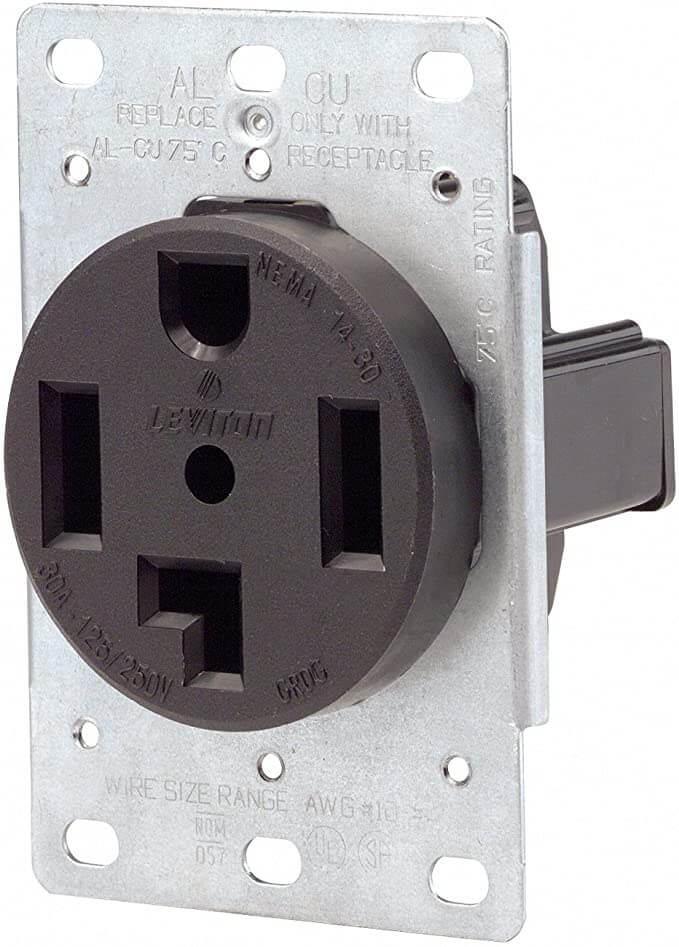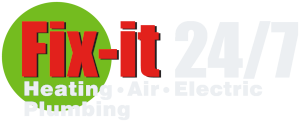What Is a 240-Volt Outlet?
July 23, 2021
What is a 240 Volt outlet and why are they so common? Let’s start from the beginning, outlets are, or should be, a familiar device in the home. An outlet is the connection point between the source of electricity and an electrical device or appliance. A standard outlet is rated for 120 volts and is suited for plugging in a TV, computer, vacuum cleaner, or other regular household electrical device. Higher-powered appliances, such as a washer/dryer, require more electricity, and that’s where a 240 volt outlet is needed.
How a 240-Volt Outlet Differs from a 120-Volt Outlet
Modern-day 120-volt outlets have three prongs, a 120-volt wire and a neutral wire. However, a 240-volt outlet has two 120-volt wires plus a neutral wire and ground wire. You can easily tell the two apart by the 240-volt outlets’ 4 prong design shown above. A 240 volt outlet is larger with two vertical side holes, an “L”-shaped hole on top, and a bottom hole that looks like a half circle. Newer four-prong outlets add a ground wire over older three-pronged ones that helps avoid electrical shock.
A 240-volt outlet is typically about 4½ inches high and 4½ inches wide. Older types had a three-prong configuration with a backward “L” socket hole and two holes on the side that were placed diagonally. If you find these, it’s best to upgrade them as newer outlets are made to meet the latest safety standards. There are different types of 240 volt outlets as well, depending on the application, appliance, and required amperage. The appliance’s user manual will tell you what outlet the system requires.
Where Are 240 Volt Outlets Used?
Four-prong, 240-volt outlets are used to deliver power to heavy-duty appliances. While older models had three prongs, they can be easily rewired to improve safety and make them compatible with modern electrical requirements. Plugging in a large appliance with a 240 volt outlet also allows it to run more efficiently. This includes appliances such as an oven, range, or cooktop as well as a clothes dryer, water heater, or air conditioner. The heavy-duty outlet may also be used with an air compressor, welder, or Level 2 electric car charger.
Where Do I Get a 240-Volt Outlet?
Electrical outlets are easy to find. You can purchase them at any home improvement, hardware, or electrical supply store. An outlet itself is relatively affordable and can even be purchased online. It’s therefore easy to get what you need based on the requirements of an individual appliance manufacturer.
Should I Install a 240 Volt Outlet Myself?
Installing a 240-volt outlet properly requires working with a variety of tools and materials, including a drill, saw, wire strippers, pliers, and a voltage tester. First, you’ll need to find the correct type of outlet, and then install a separate double-pole breaker for each appliance at the electrical panel. You must also use the correct wire for the amperage; for example, a 12-gauge wire is needed for a 20-amp circuit, while a 10-gauge wire is needed for 30 amps and 6-gauge is needed for 50 amps.
There are several important steps for running wire or conduit, connecting the wires to the breaker, and stripping, routing, and connecting wires. It’s important to remember that 240 volts is a lot of electricity and can cause very serous injury. If you don’t have experience with this kind of work, it is a better option to have a professional electrician complete the job. They can install the outlet quickly, test it, and ensure it’s safe to use.
Contact Fix-It 24/7
Our trained technicians are skilled at all types of wiring and rewiring work. If you need a new outlet or an upgrade, they can complete the job quickly and without hassle, with satisfaction guaranteed. All our work is up to code and our licensed staff is EPA and NATE certified. To learn more, request installation of 240-volt outlets, or schedule other electrical work, call us at (303) 214-0277 today.







